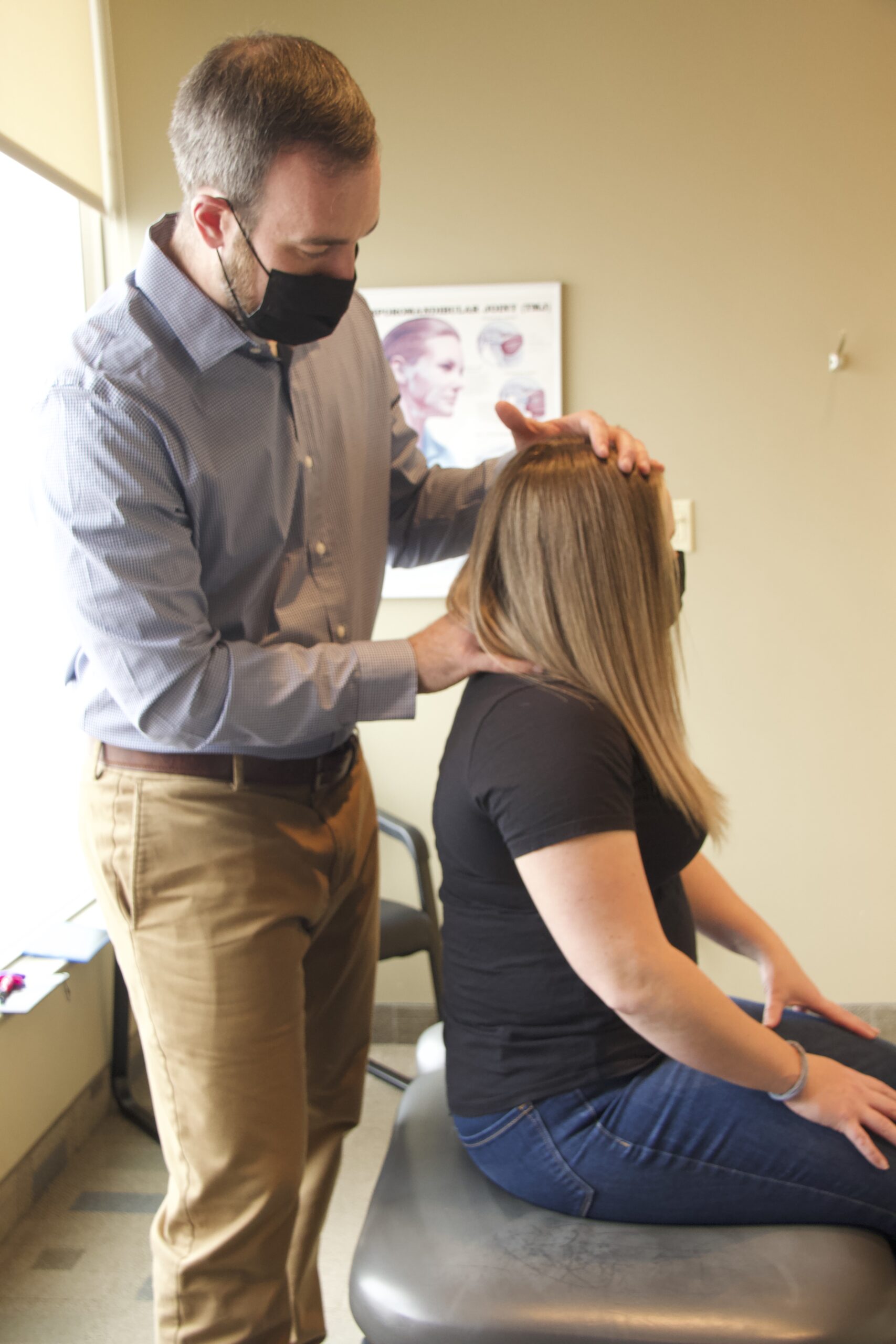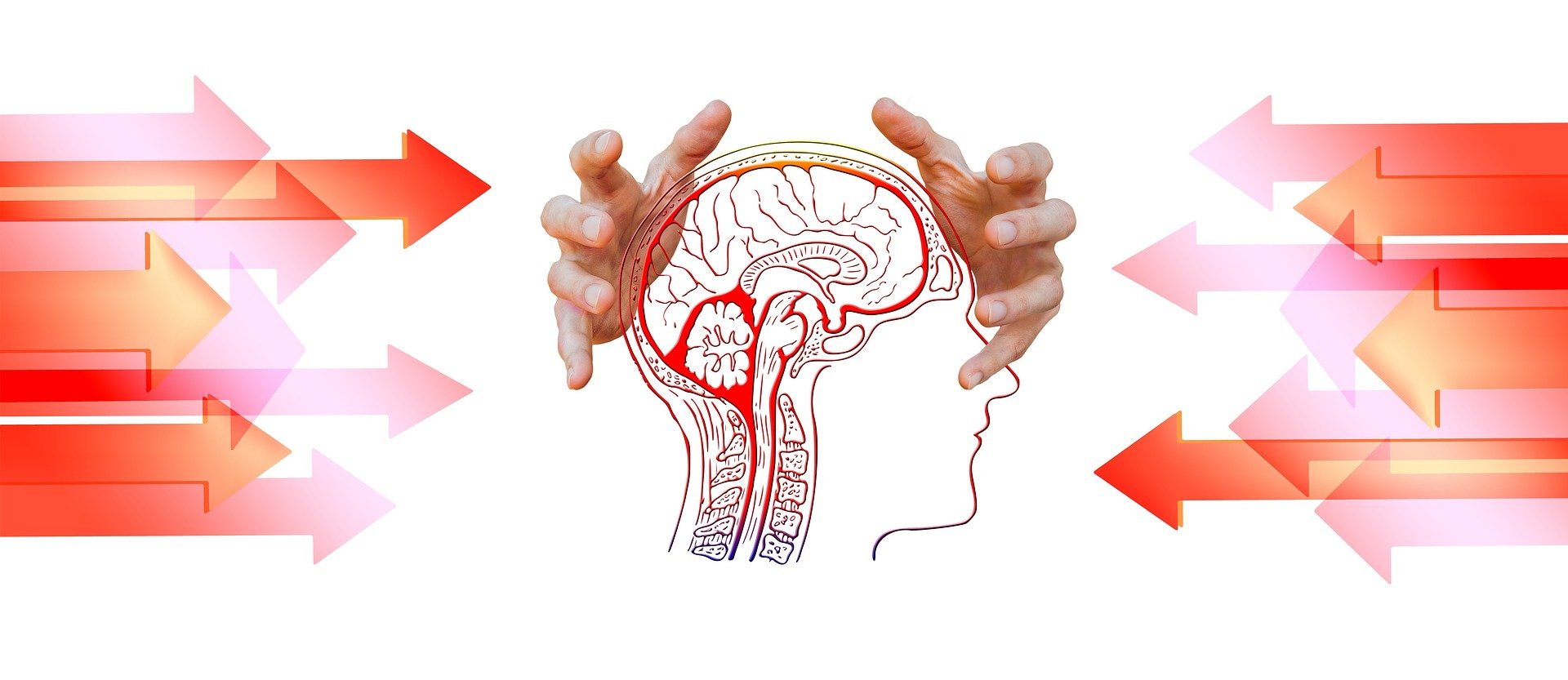Cervicogenic headache are a common type of headache, especially after an motor vehicle accident, injury or blow to the head or neck.
Cervicogenic headache are often misdiagnosed due to their symptom overlap with other headache types, such as tension headache or even migraine. It is a unique condition - a secondary type of headache - where the problem originates from the neck and pain radiates to the head or face. Understanding its characteristics is crucial for proper diagnosis and treatment so you actually get better.
These headaches can make it nearly impossible to focus, and difficult to move your head because the neck pain.
In this article we explore the symptoms, causes, diagnosis, treatment, and prevention strategies of cervicogenic headaches.
You may feel like there is nothing you can do about it right now, but rests assured, within just a few minutes after reading this, you will be well on your way to a headache free future!
Key Takeaways
- Cervicogenic headaches are characterized by pain that starts in the neck, typically the base of the skull and may extend to the forehead, temple, or eyes, often accompanied by neck stiffness and limited motion.
- These headaches are commonly one-sided, can last from hours to a week, and may be triggered or alleviated by neck movements, postures, or pressure.
- Diagnosis involves a thorough medical history, symptom assessment, and physical examination, with diagnostic tests to differentiate from other headache types.
- Treatment options range from conservative management strategies such as chiropractic care, and physiotherapy.
- Prevention and management include lifestyle modifications, ergonomic adjustments, regular exercise, stress management, and understanding and avoiding known triggers.
How To Never Have A Headache
Request your FREE - Life Changing Report

Understanding Cervicogenic Headache Symptoms
Pain Patterns and Intensity of Cervicogenic Headaches
Imagine your head is like a drum, and inside, a steady beat of pain throbs from the back of your skull to your eyes. Sometimes a better analogy is your head as a pin cushion, with a stabbing pin behind your eye, on the side, or even back of your head. This is what a cervicogenic headache can feel like.
The unique feature with cervicogenic headaches is that the pain often starts at the neck and then travel into your head, up behind your eyes, to your temple, or back of your head. The intensity can range from a dull annoying ache to a sharp, stabbing, debilitating sensation.
Cervicogenic headaches are the unwanted guests that can show up at any time and stay for hours, days, even years. That relative that stops by and just never leaves. They can make it hard to focus, and can make you miserable. Here's what you might notice:
- A pain that feels like it's starting in your neck, and travels into your head from the neck
- The pain is on one side and doesn’t shift from side to side.
- Your neck is stiff, has reduced range of motion and the more painful your neck becomes, the worse your headache gets.
While symptoms may be similar to other forms of headaches such as tension headaches or migraines they are not the same! Migraines and tension headaches are primary type headaches, while cervicogenic headaches are a secondary headache.
Primary headaches mean that they are a condition in themselves and have triggers that elicit the headache. Secondary headaches are due to another condition. In the case of cervicogenic headaches, the injury or problem with your neck actually causes the headache!
While both can make your head hurt, cervicogenic headaches start because of problems in your neck, not just stress or muscle tightness.
Neck Pain and Stiffness Are Common In Cervicogenic Headaches
Imagine your neck is like a garden hose. When it's kinked, water can't flow well. Similarly, when your neck is kinked, it can give you a headache. This kind of headache starts because of problems in your neck. Your neck might feel tight, and like something is stopping it from moving normally.
- Neck pain can be sharp or dull
- It typically causes a reduced range of moment, making turning your head difficult
- Sometimes pain radiates not just into your head, but also into your upper back, shoulders and arms.
While a stiff neck doesn't always mean a headache is coming, it is a common sign.
Limited Range of Motion and Trigger Points
When your neck is working right, it behaves like a neck should! You can turn it easily, and life Is good. But with a cervicogenic headache, turning your neck feels like trying to swivel a rusty chair. It just doesn't want to move! This is called having a limited range of motion.
Your neck might also have 'trigger points'. These are areas of muscle that bundle up tight and spasm. They can be a huge factor in your headache!
When pressed, trigger points often cause the pain to shoot up into your head, even into your shoulder or arm. It's like stepping on a squeaky toy that surprises you with a loud noise. Only, it's not a noise; it's a headache.
- Pain in the shoulders or upper back
- Limited range of motion in the neck
- Headaches triggered by neck movements
- Headaches that worsen with certain positions
Remember, these signs are your body's way of telling you something's not right. Listen to your body.
Ruling out Bad Stuff With Headaches
With any headache, the firsts thing we want to do is to rule out ‘bad stuff’. We want to pay attention to red flags. These include:
- Severe and Unfamiliar HA,
- Fever,
- Significant neck Stiffness,
- Rash,
- Nuchal Rigidity,
- Facial Numbness,
- Vertigo,
- Diplopia,
- Difficulty Walking,
- Nausea,
- Nystagmus.
- Fever and neck stiffness
Once we have ruled out possible ‘bad things’, we can start narrowing down on the actual diagnosis.
Interestingly, diagnostic imaging is rarely helpful in determining the type and cause of headache. Typically diagnostic imaging such as X-ray, or MRI are helpful to rule out other diagnoses, especially when one or more of thees ‘red flags’ are present.
However, diagnostic imaging is typically the same in those with cervicogenic headache, and those without one.

Cervical Spine Issues and Their Impact on Cervicogenic Headaches
Cervicogenic headaches on average affect women in their 40’s. Sorry ladies, s but cervicogenic headaches are four times more common in women than men.
They are especially common in someone who has experienced trauma, such as a motor vehicle collision, concussion, or incident from a sporting event, or fall. Weight lifters also commonly experience cervicogenic headaches.
I’ve had patients who were boxers present with cervicogenic headache. They all deny trauma…despite their job literally exposing them to trauma daily.
How Cervicogenic Headaches Look and Feel
The pain intensity of cervicogenic headache scan vary. They can be as debilitating as a bad tension headache, or even a migraine. Hence why a ‘bad headache’ isn’t always a migraine.
They are typically on one side of your head, and that side doesn’t change. However some people do experience them soon both sides. Often times theses with cervicogenic headache will exhibit kinesiophobia - a fear of movement.
The reason for this is that there is a neck problem. And moving their neck will often intensify their headache. Anxiety is also common for those with cervicogenic headaches, especially if after a motor vehicle accident, and whiplash injury. Think of your neck like a stack of blocks. When the blocks start to wear out or get damaged, it can cause a lot of trouble. This is what happens with cervicogenic headaches. The bones and cushions in your neck, called discs, can wear down over time. This is called degeneration. It's like when a door hinge gets rusty and creaky. Your neck can feel the same way, and that pain can move up to your head.
Here's a quick list of things that can cause cervicogenic headaches:
- Arthritis in your neck
- Disc problems in your neck
- Neck injuries, like whiplash, or concussion
- Bad posture for long periods of time
Remember, cervicogenic headaches are because of a problem with your neck. If you solve the neck problem, the headaches go away! This is where seeing a specialist comes in handy.
Trigger Factors and Lifestyle Considerations
Think of your body like a car. Just like a car needs the right fuel, tires, and maintenance, your body needs good habits to keep running smoothly. Bad habits can be like sugar in your gas tank - they mess things up! Coincidently extra sugar in your body can mess you up too…it just takes longer to take effect than in a gas tank…but I digress…
Here are some things that can trigger cervicogenic headaches:
- Inactivity, like when you sit on the couch all day.
- Bad posture, like slouching at your desk all day at work or gaming all night.
- Stress, causing your shoulders to be by your ears.
- Poor sleeping hygiene, like staying up too late.
To keep cervicogenic headaches away, think about what you do every day. Are you sitting like a bump on a log? Are you glued to your screen? Try to move more and sit up straight. Do your exercises. See the proper healthcare provider. Doing these things are like giving your car a tune-up - it helps everything run better!
Differentiating Cervicogenic from Other Headache Types
There are three categories of headaches. Primary headaches, secondary and tertiary.
Primary headaches include migraine, tension headaches, cluster headaches. They are a condition all in of them selves.
Cervicogenic headaches fall into the category of secondary headache. Secondary headaches are caused by another problem or condition. A hangover is another type of secondary headache. They are because you had a bit too much fun!
Cervicogenic headaches are due to an injury of your neck. The cervicogenic headaches is coming directly from cervical spine issues.
The Anatomy and Neurology of Cervicogenic Headaches
There are over 100 different forms of headaches that are all classified into either primary, secondary or tertiary. These headaches affect nearly half of the population!.Depending on what study you read, cervicogenic headaches account for between 3-25% of all headaches
Like mosts thing sin life, the exact mechanism of cervicogenic headache is debatable. However, there is thought to be both an anatomical and a neurological explanation.
Anatomical Explanation of Cervicogenic Headaches
The anatomical basis of cervicogenic headaches are thought to be from the convergence of sensory neurons from the head, neck, and face into the trigeminocervical nucleus. The trigeminocervical nucleus (TCN) is an area within the brain steam where all of thees nerves meet. This convergence of nerves, and thus signals from all theses regions, allows bidirectional referral of pain between the neck and head.
Anatomical Explanation of Cervicogenic Headaches
A less complicated, and more anatomical or mechanical model is that mechanical irritation of the greater occipital nerve as it emerges from the suboccipital region.
Here's a simple way to tell them apart:
- Tension headaches are often triggered from stress or bad posture. They can feel like your head is being squeezed.
- Migraines feel like pounding or pulsing in your head. They can make you feel sick, and make you hide under the blankets crying yourself to sleep.
- Cluster headaches come in waves. You can be fine for months, then you get ‘clusters’ of headaches close together. They hit one side of your head, making your eyes red, tear up, and are excruciatingly painful. They affect men more often than women and cause many people to unfortunately attempt suicide.
Remember, cervicogenic headaches are the ones that start with neck pain and then move to your head. If your neck doesn't hurt, it's probably not a cervicogenic headache.

Diagnosing Cervicogenic Headaches
Medical History and Symptom Assessment
Think of your doctor as a detective. They're like Sherlock Holmes for your head! To solve the mystery of your headaches, they start by asking about your health history. They want to know all about your past illnesses and any medicines you take.
Good doctors listen to you! They ask where it hurts, how often, and how bad. It's like they're putting together pieces of a puzzle. They might ask about other stuff too, like if you get dizzy or have trouble seeing.
- Health history
- Headache patterns
- Other symptoms
Your doctor's goal is to make a map of your symptoms. This helps them figure out if you have a cervicogenic headache or something else.
Remember, there are over 100 types of headaches. It's important to diagnose the right one. Just like you wouldn't use a map of New York to find your way in Los Angeles, you need the right map for your headache.
Physical Examination and Diagnostic Tests for Cervicogenic Headaches
After taking your history, the doctor should perform an examination. They will check how well your neck moves, perform orthopaedic, neurological, and a cranial nerve examination. These tests allow them to determine if you have a cervicogenic headache. They should be use their hands to feel for any tender spots or knots in your muscles that might be like little alarm bells ringing for pain.
To get a clearer picture, your doctor might send you for special tests. While these tests certainly don’t rule in a cervicogenic headache, when necessary they can help rule out other possible causes of the headache.Here's some tests that they might send you for:
- Blood tests
- MRI or CT scans
- X-Rays
Treatment Options for Cervicogenic Headaches

Conservative Management Strategies for Cervicogenic Headaches
Imagine your head is like a garden. Sometimes, it gets a headache-weed. You can pull it out. You don’t need to blow up the garden. That's like using conservative management for your headache. You don't always need strong medicine or surgery.
- Using ice packs or heat can help relax your neck muscles, which can help ease off the headache. It's like giving your plants a little sun or shade when they need it.
- Over-the-counter medication can be helpful, but make sure you speak with your medical doctor or pharmacist before using. These are meant for short term use. If you are using them longer than a week, they aren’t solving your problem and you need additional help.
- Exercise is a key component in solving these headaches. Just like water is to helping your garden grow.
Remember, these steps are like first aid for your headache. They can help, but sometimes, you need a gardener's advice.
If your headache keeps coming back, think about visiting a chiropractic orthopaedic specialist, or physiotherapist that deals with these conditions.
These healthcare providers know about different headache-weeds and can help you find the right tools to get rid of them for good.
Dr. Joseph Tanti’s Chiropractic Orthopaedic Specialist Approach to Cervicogenic Headaches
After completing your history and examination, Dr. Tanti will know exactly what problems are causing your cervicogenic headache.
Now that we know the problem, we develop a Personalized Health Program specifically for your needs.
I will likely prescribe specific exercises and stretches, as well as other activity modifications and self care strategies you can implement right away. These are crucial. Why?
You are on your own most of the time. Even if you cane into the office for treatment EVERY DAY (which is clearly not going to happen), you would still be on your own 99% of the day.
So what you do on your own makes a huge impact on how well you improve.
I may also provide different therapies, such as myofascial release, joint mobilization and manipulation, low level laser therapy, and monitored strengthening exercises.
The key with cervicogenic headaches is to improve neck function. This involves evaluating and improving posture, biomechanics, strength and mobility, as well as addressing any other factors. This could include whiplash, or concussion - cervicogenic headaches are very common in theses scenario’s
I also work with your other health care providers when necessary. This may include your family doctor, physiotherapist, massage therapist, etc.
Some of the benefits of how I treat these conditions are that treatment is:
- Non-Invasive: No surgery needed.
- Drug-Free: No medicine, no side effects.
- Personalized specifically to you
- Holistic Approach: Fixes more than just the headache.
Often with cervicogenic headache the initial, intense pain dissipates rapidly. However, if specific exercises are not provided, and done, it typically is a reoccurring condition.
When More Invasive Procedures Are Needed
Sometimes, your headache won't go away with conservative therapies. And when these problems become stubborn, despite your best efforts, we need to take things to the next level.
This is when your medical doctor or I may refer you for additional treatment:
- Nerve blocks: Like turning off a light switch, they stop the pain signals. They inject a chemical into the region that your headache is stemming from. If they block the pain coming from those nerves, they can no longer cause the pain!
- Injections: These injections can be used to either reduce inflammation in the joints, or to relax the muscle spasms. If these are the structures causing the pain, the pain will stop!
- Radiofrequency ablation: If the nerves have been determined to be the source of pain, we can burn the nerve, so it no longer senses pain! Of course nerves do eventually grow back, and it can have other side effects. But this might be an option.
Remember, these therapies are for when conservative treatments don't work. They're stronger - like using a grenade when a pellet gun would do - and you need a referral for these procedures.
Preventing Recurrence and Managing Chronic Cervicogenic Headaches

Lifestyle Modifications and Ergonomic Adjustments
Imagine your body is like a machine. If the parts aren't lined up right, it can start to increases your cervicogenic headaches. Your neck and head need to be functioning properly to stop the pain.
- Make your workspace a pain-free zone. Adjust your chair, desk, and computer so they fit you correctly.
- Think about how you sit and stand. Stand tall like a tree and sit like you're the king or queen of your desk kingdom.
- Improve your sleep hygiene. Like charging a battery, good sleep helps your body heal.
Small changes in how you live can make a big difference in keeping headaches away.
Remember, a chiropractor can show you how to keep better posture. It's like having a coach for your body to keep it strong and pain-free.
Regular Exercise and Stress Management
Regular exercise is key for managing headaches, and really every other medical problem you could have. Exercises keeps your body healthy and your joints and muscles moving well.
Stress management is soften important as well. Here are some tips:
- Get moving for at least 30 minutes a day. Think of it as your daily tune-up.
- Take short breaks to breathe and reset.
- Sleep is your body's time to repair. If you don’t sleep, you may not get better!
Keeping stress in check helps makes recovery smoother.
Remember, managing stress and staying active are key to preventing those pesky cervicogenic headaches from coming back. You need to fix your neck problem for good, so it doesn’t keep coming bak!
This might seem like a small thing, but it makes a big difference in the long run.
What to do now?
Research and experience has shown that therapies like the ones we provide, along with the correct exercises have the best outcomes for those with cervicogenic headaches. A personalized approach and program to solve your neck issues can be your solution to cervicogenic headaches.
Cervicogenic headaches - especially when chronic - can be a debilitating condition, but with the right management and preventative strategies, you can regain control of your life.
As a chiropractic orthopaedic specialist, Dr. Tanti uses a variety of treatments that have helped countless patients find relief. Don't let pain dictate your day—visit our website to schedule an appointment online and explore our success stories. Take the first step towards a pain-free life today!
How To Never Have A Headache
Request your FREE - Life Changing Report
Frequently Asked Questions
Cervicogenic headaches are often one-sided, triggered or alleviated by neck movements or postures, and accompanied by neck stiffness and pain. They are caused by cervical spine issues. This is unlike migraines or tension headaches, which have different triggers - sometimes a trigger is the cervical spine.
The primary symptoms include pain that starts at the base of the skull and radiates towards the front of the head, neck pain, limited neck range of motion, tenderness in the neck and shoulder muscles, and sometimes dizziness or nausea.
Immediate medical attention is needed if the headache suddenly becomes severe, and unfamiliar headache, fever, significant neck stiffness, rash, nuchal rigidity, facial numbness, vertigo, double vision, difficulty walking, nausea, nystagmus.
These headaches are typically caused by abnormal positions or conditions affecting the upper cervical spine bones. Common triggers include certain neck movements, poor posture, and injury or trauma to the neck such as whiplash, concussion, etc.
Conservative strategies include applying ice or heat, stress management, ergonomic adjustments, and avoiding known triggers. Chiropractic approaches are often very helpful.
Yes, cervicogenic headaches can become chronic if the underlying causes are not resolved. It is important to manage triggers, maintain good posture, and engage in regular exercise to prevent recurrence
